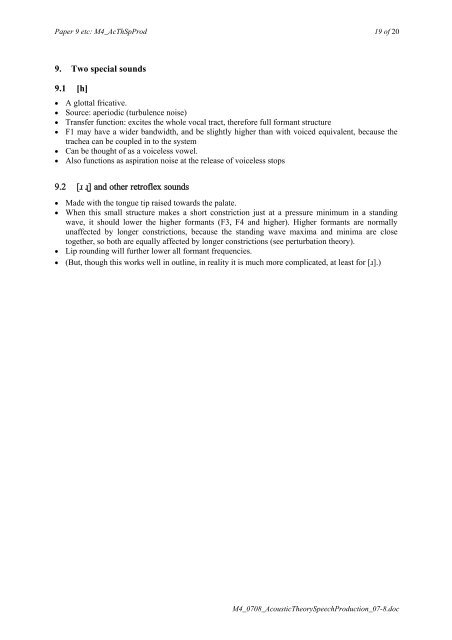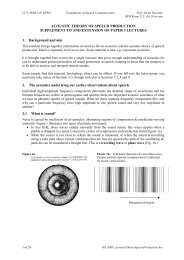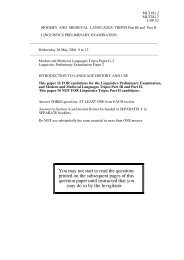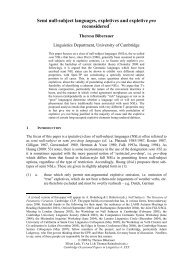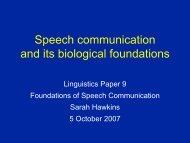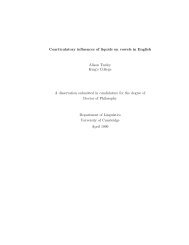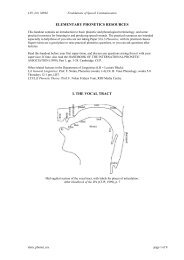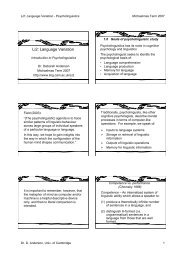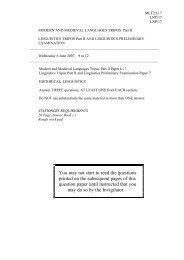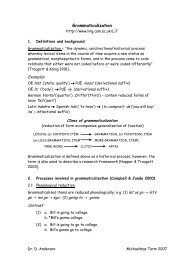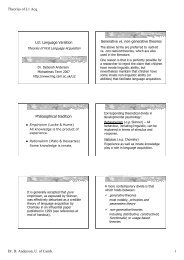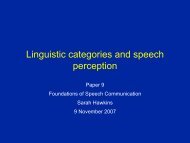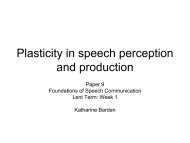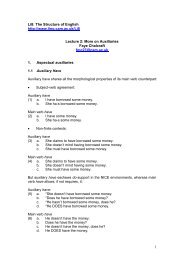ACOUSTIC THEORY OF SPEECH PRODUCTION ... - Ling.cam.ac.uk
ACOUSTIC THEORY OF SPEECH PRODUCTION ... - Ling.cam.ac.uk
ACOUSTIC THEORY OF SPEECH PRODUCTION ... - Ling.cam.ac.uk
Create successful ePaper yourself
Turn your PDF publications into a flip-book with our unique Google optimized e-Paper software.
Paper 9 etc: M4_AcThSpProd 19 of 20<br />
9. Two special sounds<br />
9.1 [h]<br />
• A glottal fricative.<br />
• Source: aperiodic (turbulence noise)<br />
• Transfer function: excites the whole vocal tr<strong>ac</strong>t, therefore full formant structure<br />
• F1 may have a wider bandwidth, and be slightly higher than with voiced equivalent, because the<br />
tr<strong>ac</strong>hea can be coupled in to the system<br />
• Can be thought of as a voiceless vowel.<br />
• Also functions as aspiration noise at the release of voiceless stops<br />
9.2 [ɹ ɻ] and other retroflex sounds<br />
• Made with the tongue tip raised towards the palate.<br />
• When this small structure makes a short constriction just at a pressure minimum in a standing<br />
wave, it should lower the higher formants (F3, F4 and higher). Higher formants are normally<br />
unaffected by longer constrictions, because the standing wave maxima and minima are close<br />
together, so both are equally affected by longer constrictions (see perturbation theory).<br />
• Lip rounding will further lower all formant frequencies.<br />
• (But, though this works well in outline, in reality it is much more complicated, at least for [ɹ].)<br />
M4_0708_AcousticTheorySpeechProduction_07-8.doc


